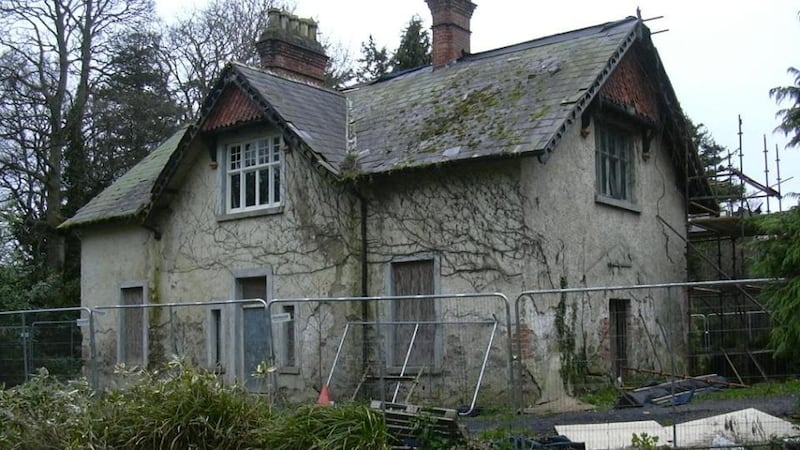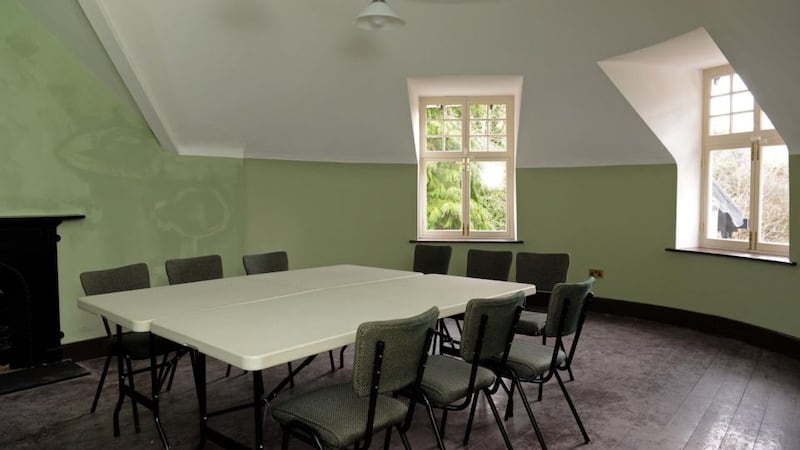Abandoned for years, Laurelmere, the charming two-storey cottage in Marlay Park, Rathfarnham, has been restored by Dún Laoghaire Rathdown Co Council (DLRCC) for the Royal Horticultural Society of Ireland (RHSI).
Lying in a ruinous state for more than three decades, Laurelmere has long held a fairytale fascination for passersby in the woods of Marlay Park. But now, the RHSI will bring life back into the building through its lecture programme and garden school, which will be run by horticulturalist and gardening lecturer, Ciaran Burke.
The house was originally built in the 18th century as a thatched cottage orné [a stylised cottage built in a rustic setting] for the La Touche family. Marlay House, the 18th century Georgian house was owned at the time by David La Touche, the first governor of the Bank of Ireland.


“The La Touche family would have used the cottage as a place for picnics, card games and theatricals,” says Pamela O’Connor, conservation architect with Dún Laoghaire Rathdown Co Council who with Alyson Carney oversaw the recent restoration works on Laurelmere.
Remodelled
In the late 19th century, the house was extensively remodelled by its next owner, Robert Tedcastle. Two rooms were added on upstairs and a slate roof in the Arts and Crafts style was added. The estate manager for the Tedcastles lived in the house at this time.
Marlay House and estate was owned by market gardener, Phillip Love from 1925 until it was acquired by Dublin Co Council [now Dún Laoghaire Rathdown Co Council] in 1972. A tenant remained in the house until the mid-1970s from which time it has been unoccupied.
“Attempts were made to stop the rot in the 1970s and structural work was done to hold the building in its place in the 1990s, but it was never a priority,” says Michael Church, heritage building manager at DLRCC. The most recent restoration work on Laurelmere by Dunwoody and Dobson has been carried out in the Arts and Crafts style re-using original stone-tiled flooring, wood panelling, tasteful light fittings and original cast iron fireplaces.
There are two reception rooms downstairs with space for the RHSI boardroom, library and the Garden School office upstairs. Reproductions of William Morris floral printed wallpapers – popular during the Arts and Crafts movement – have been used throughout the house. Paint colours used during the late 1700s, when the house was first built, have also been replicated.
“We have straddled both periods of the house’s life with the restoration work and now it will move into its third life,” says Pamela O’Connor. The public has shown a huge interest in the restoration and more than 500 people saw the interior of Laurelmere as part of Open House Dublin last year.
Perfect match
“The biggest challenge was to make sure we found the right people to rent the property when it was finished,” says O’Connor. “We were tempted to turn it into another tearooms, but the walled garden tearooms are very popular and there will be another tearooms in the new golf pavilion at the College Road end of Marlay Park. We didn’t want it as a workshop or offices, so the RHSI is a perfect match for the park as it will have a lot of interchange with it.”
Deirdre Ryan from the RHSI says the society is thrilled with the new, higher profile location for their offices and library of more than 1,000 gardening books. Their last temporary premises in Cabinteely House couldn’t host public events or allow the society to develop a garden that the public can enjoy.
“The garden to the front of the house will be used by the garden school and we will open a naturalistic style garden to the back, with seating for adults, play space for children and the possibility of hosting sculpture exhibitions,” says Ryan.
“We would love to re-install the conservatory that was originally there but we don’t have the funds for that yet.” The restoration of Laurelmere was funded by revenue from the Marlay Park concerts.
The RHSI has about 850 individual members as well as affiliated societies. “We intend to make this a place of learning that people can come in and out of,” says Ryan.
Ciaran Burke will use Laurelmere as his base for the garden school, offering horticultural courses and workshops alongside the New Growth Project which offers free horticultural training for unemployed and disadvantaged people.
“These courses will raise awareness of the environment, the role of food, the physical health benefits and mental wellbeing that gardening can bring,” says Burke.
"Participants will get exercise, a chance to feel the peace that gardening can bring as well as socialising with others while working and learning." See thegardenschool.ie for more details











